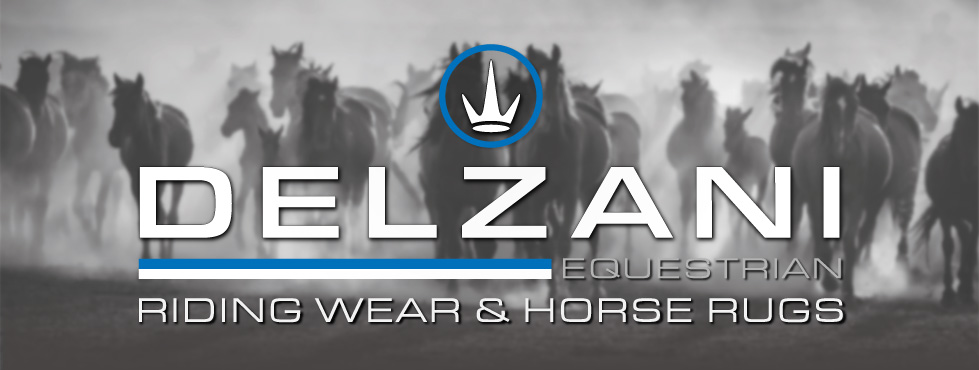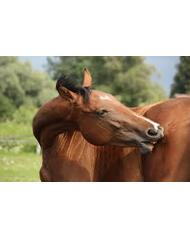Fly Mesh Boots Troubleshooting & Care: Stop Slipping, Rubbing and Wear

Fly Mesh Horse Boots: How to Stop Slipping, Rubbing and Premature Wear in Australian Conditions
Updated September 2025
A practical guide for Australian horse owners on how to fit, maintain and care for fly mesh boots so they stay secure, breathable and durable through summer - including proven tips to prevent slipping, rubbing and heat build-up.
If your fly boots are always sliding down, twisting, rubbing, or wearing out halfway through summer, you are not alone. The good news is that most of these problems are preventable. With the right mesh, a proper fit, and some simple care habits, fly mesh boots can stay secure, breathe in the heat, and last more than one season. This guide explains the fixes that actually work in Australian conditions and shows you why the Delzani Fly Mesh Horse Boots are built to solve these issues.
Choose Mesh That Holds Its Shape and Keeps Air Moving
Comfort begins with structure. Soft or floppy mesh collapses against the leg, trapping sweat and heat, which causes slipping. A strong open-weave mesh stands away from the skin, creating airflow and allowing sweat to evaporate. That airflow is why structured boots often feel cooler than bare legs that are constantly bitten. Delzani Fly Mesh Horse Boots are made from breathable ballistic mesh with soft lining only at the seams, never bulky neoprene wrapping the leg.
Get the Fit Right: Length and Strap Order
Most slipping comes from length, not tightness. Boots that are too long for the cannon bone will slide down and bunch at the pastern. Front boots should finish a few centimetres below the knee and clear the coronet. Hind boots can be slightly longer but should not touch the hock or ground. Delzani’s set includes two shorter fronts and two longer hinds so each leg gets the right fit.
Once the length is correct, the fastening order makes the difference. Do the middle strap first to set alignment, then the top strap, and finally the bottom strap. Walk the horse a few steps, check alignment, and adjust. This simple sequence prevents twist and keeps boots in place all day.
Prevent Bunching Without Over-Tightening
If boots bunch at the bottom, it usually means they are too long, the bottom strap is much looser than the others, or your horse has very sloped pasterns. Fix the length first, then use the middle-top-bottom strap order. Do not over-tighten straps, as that creates rubs and pressure points.
Stop Rubbing With Clean Skin and Even Pressure
Rubs are usually caused by grit, sweat, or uneven pressure. Start with clean legs and brush boots before fitting. In humid weather, rinse boots to remove sweat and salt, then dry in shade. Fit with even pressure, letting the middle strap take most of the hold. If skin is already sore from bites, treat it first before reintroducing boots so your horse associates them with comfort, not pain.
Control Twist With Alignment, Not Force
Boots will twist on tapered legs if they are not aligned properly. Contoured cuts help, but the fastening order matters more. Secure the middle strap first, then the top and bottom. Over-tightening straps just causes new problems. Alignment beats force every time.
Managing Heat in Australian Summers
Insects thrive in still, humid conditions. Horses do not. Structured mesh boots create airflow and can actually feel cooler than bare skin. In tropical or humid weather, check under boots daily, rinse if dusty or sweaty, and remove overnight if insects are quiet. Owners often find that fewer bites, less stamping, and stronger hooves make the extra care worthwhile.
Care Tips to Extend Boot Life
Treat fly boots like work gear. Brush off dust daily, rinse when needed, and dry in the shade. Keep Velcro clean with a stiff brush so it grips properly. Check stitching weekly and trim loose threads. Never leave boots baking on a fence, as UV quickly weakens mesh and straps.
Safety Guidelines That Matter
Supervise your horse the first few times to adjust fit and catch issues early. Avoid deep mud or burr patches where mesh can clog. For shod horses, ensure the lower edge clears the shoe. In coastal humidity, rinse more often and let legs breathe overnight if you see sweat scald. Never boot over open sores or active skin infections.
FAQs From Riders
Can my horse wear fly boots all day?
Yes. Many horses do during insect season. Check daily, and in very humid weather, let legs breathe overnight.
Do they help with Queensland Itch?
They do not cure it, but they reduce lower-leg bites that worsen the itch cycle. Best results come when combined with a quality fly rug and mask.
Will they fit different horse builds?
Yes. The contoured cut and wide straps adjust for most leg shapes. Short cannons may need front boots on all four legs, while longer cannons suit the hinds behind.
Do they handle dust and sand?
Yes. They reduce stamping, which means less sand churn. Just brush or rinse them to keep airflow high.
Why Delzani Fly Mesh Boots Are Different
Delzani Fly Mesh Horse Boots are designed for real horses with a proper fit: two shorter fronts, two longer hinds, and a contoured cut that stops twisting. The ballistic mesh keeps its stand-off shape for airflow, while three wide soft-touch straps let you set secure, even pressure. Comfort backing at seams keeps breathability high. They rinse easily, dry fast, and hold up to daily turnout.
Need work boots too? Use fly boots in the paddock and switch to Delzani Neoprene Sports Tendon Boots for training or competition. Each type lasts longer when used for its proper job.
This guide is general information only. Always supervise when introducing new boots. If swelling, lameness, or skin irritation persists, consult your veterinarian.
Ready to stop slipping and rubbing? Fit them once and ride through summer with confidence in Delzani Fly Mesh Horse Boots, built to stay secure, breathe well, and last in Australian conditions.
Written by Jane Griffiths - An experienced Australian horse owner and product developer with over three decades immersed in equestrian life. Jane has spent years refining horse rugs, tack, and riding apparel to better suit Australian climates. She has enjoyed countless weekends at gymkhanas, show jumping events, and pony club competitions with her daughter, and still loves hitting the trails with friends whenever she can. Her lifelong passion for horses and hands-on understanding of equine comfort continue to shape her practical, rider-first approach to horse care and product design.
Related Equestrian Guides
Fly Masks & Fly Veils for Horses
Keep your horse calm, protected, and focused this summer with Delzani fly masks and veils, breathable comfort, Sun defence, and rider-trusted performance built for Australian conditions.
Managing and Preventing Queensland Itch in Horses
Banish the Itch: Managing and Preventing Queensland Itch in Horses
Keep Your Horse Cool: 10 Proven Tips this Summer To Beat the Heat
Hot Aussie summers test every rider. From hydration and electrolytes to fly protection and summer rugs, these 10 proven tips keep your horse cool, comfortable, and safe when the heat is on.
Horse Cooling Guide: Preventing Overheating and Heat Stress After Exercise
Hot Aussie summers put horses at real risk of heat stress. Learn how to prevent overheating, cool your horse safely after exercise, and spot early warning signs. With smart care and the right gear, you can keep your horse comfortable, safe, and thriving.
Do Horses Really Need Fly Masks and Bonnets in Australia?
Australian horses face harsh sun, dust, and insects. Fly masks and bonnets protect eyes, ears, and skin while improving comfort and focus. Learn when they’re essential and how to choose the best fit for your horse.
Electrolytes for Horses: Why They’re Essential & How to Use Them
Electrolytes are vital for horse hydration, muscle function and recovery. Learn why they matter, how to spot imbalances, and when to supplement to keep your horse healthy and performing in Australia’s unique conditions
How Fly Mesh Boots Help Horses in Australia: Benefits, Fit and Everyday Use
Stop the stamping, rubbing and wasted shoeing costs this summer. Learn how fly mesh boots protect Aussie horses from mozzies, midges and march flies without overheating legs and why fit, airflow, and care make all the difference.
Do Fly Masks Really Work for Horses? Fit, Safety and Comfort in Australian Summers
Fly masks do more than block insects - they protect eyes from bacteria, reduce sunburn risk, and keep horses calmer in Australia’s harsh summers. Learn how correct fit, breathable mesh, and Delzani’s smart designs keep horses safe, cool, and comfortable.
Fly Bonnets for Horses: Do They Really Stop Head-Shaking and Distraction?
Australian riders often ask if fly bonnets are just for looks or if they really help. Discover how bonnets reduce head-shaking, improve focus, and protect sensitive ears from flies during training, trails, and competition.
Can Horses See Through Fly Masks Clearly? Vision & Safety in Australia
Can horses see clearly through fly masks? Yes. This guide explains how mesh veils, deluxe bonnets, and the Apollo SkyBreeze differ in vision, safety, and comfort, helping Australian riders choose the right style for their horse.
Can Fly Masks Cause Sweating or Rubbing? What Australian Owners Need to Know
Australian guide to horse fly masks, covering sweating, rubbing, fit, daily care, climate considerations, and how Delzani’s breathable designs protect horses from flies, dust, and UV without causing irritation.

















